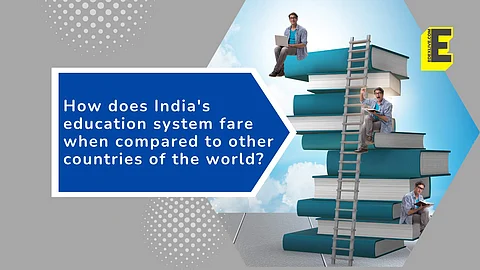

In a rapidly globalising world, understanding the education systems across different countries is essential, especially when young students want to pursue education abroad. India and its diverse population face unique opportunities and challenges in its education system. Let’s do a Strengths, Weaknesses, Opportunities and Threat (SWOT) analysis of the education system in India, and the world.
Some noteworthy aspects of education in India include:
- Scale and Diversity: India's education system is one of the largest in the world, catering to a massive student population. It comprises numerous boards, such as the Central Board of Secondary Education (CBSE), the Indian Certificate of Secondary Education (ICSE) and state boards, offering diverse curricula and examination patterns.
- Importance of STEM: Science, Technology, Engineering and Math (STEM) education holds significant importance in India. The focus on these fields aims to meet the demands of a rapidly evolving job market and promote technological innovation
- Examination pressure: India is known for its highly competitive examination-oriented culture. Students face immense pressure to excel in national-level entrance exams for admission to prestigious institutions. This intense competition can lead to stress and mental health issues
Education Inequality: While efforts have been made to improve access to education, educational inequality persists in India. Disparities in infrastructure, quality of teaching and resources between urban and rural areas contribute to this gap
Education in the world:
Comparatively, education systems across the world exhibit a range of approaches and characteristics. Here are a few key factors found in various global education systems:
- Holistic approach: Many countries prioritise a holistic approach to education, emphasising the development of well-rounded individuals. They focus on nurturing creativity, critical thinking, problem-solving and social skills alongside academic knowledge
- Vocational and skill-based education: Several countries offer robust vocational and skill-based education systems. They recognise the importance of preparing students for a diverse range of careers and provide pathways that combine academic learning with practical skills development
- Education funding: Education funding models differ globally. A few countries invest heavily in education, providing adequate resources and facilities, while others face financial constraints, resulting in challenges such as overcrowded classrooms and resource shortages
- Teacher quality and training: The quality of teachers and their training varies across countries. A few nations prioritise the recruitment, training and professional development of teachers to ensure high-quality education delivery
- Early childhood education: Many countries recognise the significance of early childhood education and offer comprehensive programmes that focus on the development of young learners. These programmes lay a strong foundation for lifelong learning
Education in India and the world exhibits a wide range of similarities and differences. While India grapples with challenges such as scale, examination pressure and educational inequality, other countries emphasise holistic development, vocational education and early childhood education
